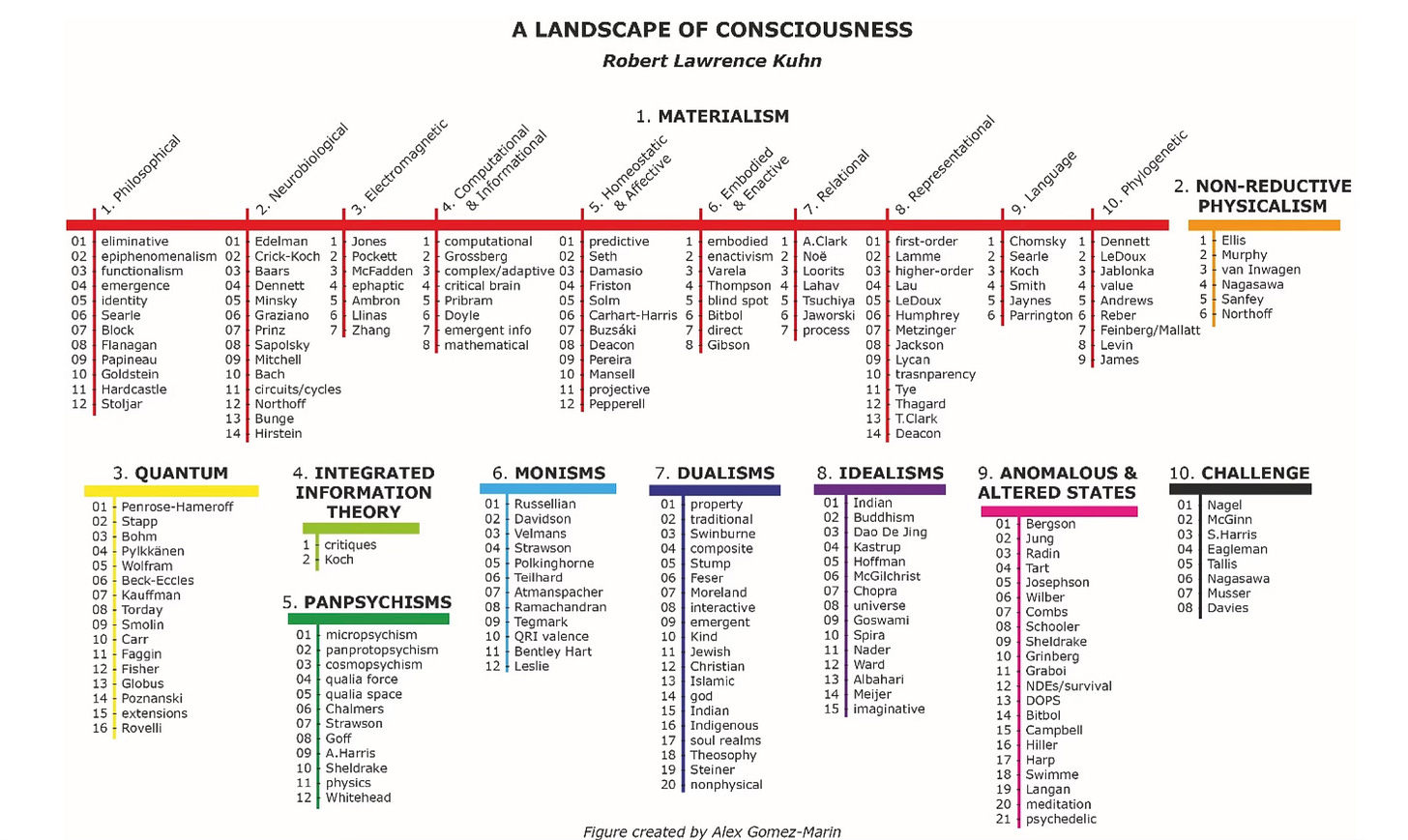What (exactly) does it mean to "understand" life or the brain?
getting real about our scientific understanding of complex systems
Those who study biological systems are faced with a conundrum. From a scientific perspective, we understand the basic processes that underlie these systems, the interactions within and between molecules and how they establish structures (like cellular membranes, pumps, motors, etc), facilitate and exploit the chemical reactions involved in duplicating cells and maintaining their non-equilibrium state, and how genetic information accumulates and is accessed. These processes were established ~4 billion years ago and are shared with all living systems we know of (see latest on LUCA). While evolution has led to surprisingly arcane processes (see bioliteracy blog link), and not withstanding semi-mystical talk about "collective intelligence" (McMillen & Levin 2024), nothing magical has turned up (link).
Over the last few decades (basically as long as I have been "doing molecular biology") there has been remarkable progress in the techniques used to characterize living systems. As an example, single-cell RNA sequencing and related tools can reveal the diversity of cellular states. No approach has been more profound than the use of generative AI-based tools. While I worked (tirelessly?) as a graduate student to produce a low resolution structure of the membrane protein involved in electrical discharge and muscle contraction, AlphaFold3 can predict, quickly and quite accurately, both the three-dimensional structure of a protein and its functional interactions with other molecules, including drugs. Theory-independent neural networks can provide predictive models of human behavior without explicit connections to the underlying mechanisms involved (see Ger et al, 2024). Through the use of such models Ger et al revealed the impact of stochastic (noisy but mechanistically understandable) processes that underlie a simple human behavior.
The emerging question is whether, knowing that the molecular systems that underlie life and consciousness are understandable, how are we to deal with our very human desire to make an understandable story out of predictive network models? An interesting example, brought to my attention by Sabine Hossenfelder in a Twitter post, notes a paper by Kuhn (2024) that describes the approximately 200 "theories of consciousness" currently roaming in the wild (figure ↓).
But, sadly, compared to neural network (AI-based) models, these "theories" make few if any testable predictions. More often than not they appear to be base on various quantum, non-materialistic, or poorly defined assumptions. As noted by de Lorenzo (2024) while we can be confident that AI-based models "obey" the physical-chemical constraints that apply to living systems, we do not actually know how they work in detail. As the complexity of the systems modeled increases, from the relatively "simple" (e.g. protein structures and genetic interactions) to the overwhelmingly complex (neural system, consciousness) our understanding of how they "work" becomes increasingly opaque. Nevertheless, there are on-going efforts to understand the bases upon which such neural network models make their predictions, an area of study known as explainable AI (xAI)(see Novakovsky et al., 2023). Novakovsky et al consider using xAI on predictive genetic/genomic models with the goal of gaining useful "mechanistic insights into complex deep learning models." Nevertheless xAI analysis of genomic AI-based neural network models appears in its early stages. It certainly does not yet seem up to the task of analyzing AI-based models of physiological systems, including the brain, and their cellular, genetic, developmental, and experiential inputs. Cells and organisms are built upon cellular structures and genetic / genomic systems and information accumulated over billions of years of uninterrupted evolutionary processes, often in response to drastic environmental challenges, such as the suggested link between the 90 million year snowball earth stage and the appearance of multicellular organisms (link) or the extinction event associated with a collision with an asteroid ~66 million years ago (link). In multicellular organisms, they include complex cellular interactions involving multiple cell types and stochastic events occurring during their formation.
What emerges from these studies is a realization that the complexity of living systems makes conventional approaches to "theory" based mechanistic understanding essentially obsolete. As noted by the physicist Philip Anderson (1972) "more is different" particularly when the many parts of the system interact at the molecular level with multiple partners, with varying affinities, and form regulatory and adaptive networks with "feed-back and feed forward" interactions. Include the fact that many of the underlying physical and chemical systems involved are intrinsically unpredictable (link). The result is emergent behaviors not directly deducible, but consistent with the molecular components and processes active in living systems (Macklem, 2008; Artime & De Domenico, 2022).
Consider the recent paper by Shapson-Coe et al (2024) that describes a single "cubic millimeter of human temporal cortex" that "contains about 57,000 cells, about 230 millimeters of blood vessels, and about 150 million synapses and comprises 1.4 petabytes" of information.
In addition to the various excitatory and inhibitory synapses, together with the various glial cells involved in supportive and modulating roles, these systems involve noisy (stochastic) variation influenced by neural inputs and activities, synaptic morphologies and efficiencies, and the modulating effects on surrounding cells that differ in subtle and not-so-subtle ways from one another. Different people can be expected to display similarities AND differences in neural organization (see Johansen et al, 2023). It is clear that these differences, many of which emerge from stochastic variations within and during development have important impacts on the way the system behaves (Deco et al., 2009). An interesting observation (to me) is that neural network models can explain differences between people in terms of the intrinsic noisiness of their responses (Ger et al, 2024).
As these neural network models become increasingly impactful in biology and medicine, it is important to introduce students to how they work and what they do and do not tell us about biological systems.






